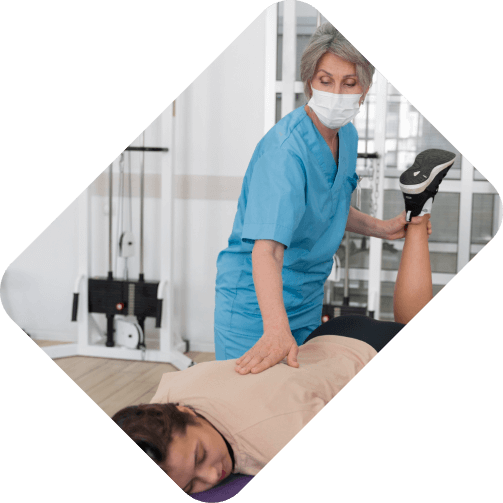There are two main posture types which are commonly recognised to be the underlying causes for many of the symptoms we may experience when in pain or discomfort. These are known as the anterior and posterior postures.
The Anterior Posture Type
The ‘anterior type’ posture is characterised by a forward shift of the body’s centre of gravity, resembling a ski jumper’s stance. This posture can have significant effects on the body’s structure and function.
How can this posture affect overall health?Impaired breathing: reduced pressure in the chest cavity can disturb fluid flow and reduce efficient blood circulation
• Pelvic congestion: compression of organs such as the bladder and uterus may lead to serious conditions such as bladder infections, painful menstrual cycles, and difficulty conceiving
• Headaches and neck tension: forward head posture creates tension in the base of the skull which can affect blood flow to the brain, manifesting as headaches
The Posterior Posture Type
The ‘posterior type’ posture refers to a specific body pattern where the ribcage and diaphragm are positioned in a way that can influence overall health and function. In this posture, there is a backwards shift in the body’s centre of gravity line.
How can this posture affect overall health?Impaired rib function: The rib cage is held in compression, reducing space in chest cavity. The diaphragm struggles to move effectively, resulting in impaired breathing mechanics
• Impaired circulation: the diaphragm helps the heart pump blood by creating pressure changes as it moves during breathing. When the diaphragm can’t move properly, this assistance is reduced which affects blood flow through the body. Over time the heart may have to work harder, which can increase the risk of strain
• Pelvic congestion: congestion in the abdomen and pelvis affecting circulation to this area can lead to issues such as constipation, haemorrhoids, or menstrual dysfunction
How can Osteopathy help?
Osteopathy addresses the underlying imbalances of posture types by improving alignment, restoring fluid dynamics, and relieving tension. If you’re experiencing any of these issues, an osteopathic assessment can identify the root causes.


